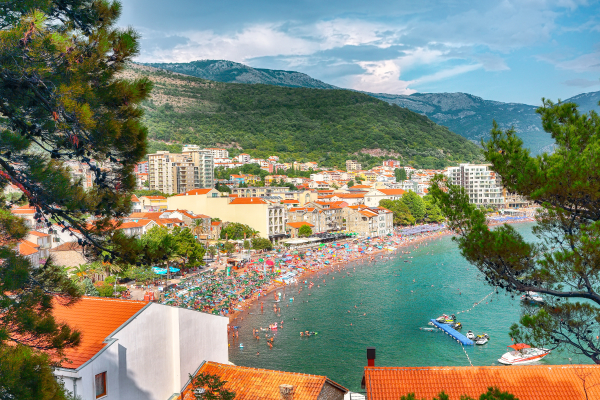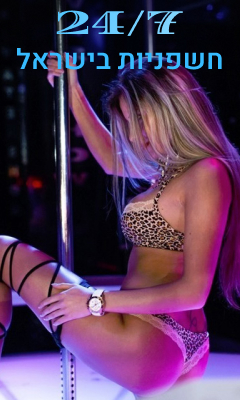- Your country
- Europa
-
- Amstetten(7)
- Bad Schallerbach(1)
- Baden(4)
- Berg(1)
- Braunau am Inn(5)
- Bregenz(3)
- Bruck an der Mur(1)
- Graz(4)
- Hartberg(1)
- Innsbruck(5)
- Kemmelbach(1)
- Kitzbühel(4)
- Klagenfurt(5)
- Krems an der Donau(1)
- Kufstein(5)
- Leibnitz(1)
- Lienz(1)
- Liezen(1)
- Linz(5)
- Oetz(1)
- Punitz(1)
- Radstadt(1)
- Salzburg(5)
- St Polten(2)
- Steiermark(1)
- Steyr(1)
- Steyregg(1)
- Traun(3)
- Vienna(30)
- Villach(5)
- Völkermarkt(1)
- Wels(5)
- Wien(1)
- Wiener Neustadt(4)
-
- Aalst(1)
- Aarschot(2)
- Affligem(1)
- Anderlecht(5)
- Antwerp(11)
- Antwerpen(1)
- Arlon(6)
- Ath(2)
- Aubange(5)
- Bastogne(2)
- Blankenberge(1)
- Bruges(5)
- Brussels(24)
- Charleroi(5)
- Deinze(3)
- Dendermonde(1)
- Diest(2)
- Etterbeek(5)
- Geel(1)
- Genk(5)
- Gent(8)
- Geraardsbergen(1)
- Grimbergen(2)
- Hasselt(5)
- Heusden- Zolder(2)
- Ieper(1)
- Izegem(1)
- Knokke(4)
- Kortrijk(3)
- La Louviere(2)
- Leuven(5)
- Liege(4)
- Limburg(4)
- Lommel(1)
- Mortsel(1)
- Oostende(1)
- Turnhout(1)
-
- Chelyabinsk(1)
- Dubna(4)
- Gelendzhik(1)
- Irkutsk(1)
- Kaliningrad(1)
- Kazan(4)
- Krasnodar(3)
- Krasnoyarsk(1)
- Maykop(1)
- Moscow(53)
- Nizhny Novgorod(4)
- Novosibirsk(1)
- Omsk(1)
- Penza(1)
- Rostov-on-Don(2)
- Saint Petersburg(13)
- Samara(1)
- Saratov(1)
- Serpukhov(2)
- Sevastopol(3)
- Sochi(5)
- Stavropol(1)
- Surgut(1)
- Tyumen(2)
- Ufa(2)
- Vladivostok(3)
- Yekaterinburg(11)
-
- Alicante(12)
- Barcelona(141)
- Benalmadena(1)
- Benidorm(7)
- Castellón de la Plana(1)
- Denia(1)
- Estepona(1)
- Fuengirola(4)
- Ibiza(54)
- Jerez de la Frontera(1)
- Lanzarote(1)
- Las Palmas de Gran Canaria(5)
- Madrid(79)
- Malaga(10)
- Marbella(55)
- Murcia(1)
- Oviedo(1)
- Palma de Mallorca(55)
- Puerto Banus(3)
- Seville(1)
- Tarragona(1)
- Tenerife(10)
- Torrevieja(6)
- Valencia(10)
- Vigo(1)
- Zaragoza(1)
- Worldwide
Categories
Discover Montenegro: Top Attractions and Travel Tips
 Montenegro is a country that exudes a medieval ambiance. The stone towns from the 16th and 17th centuries have remained unchanged over the centuries. Yet, the allure of Montenegro is not solely in its history: you can savor the freshest farm mussels, relax on beaches comparable to those in Monaco and Sardinia, and revel in the natural beauty of its national parks. Here’s a guide to must-visit spots in Montenegro.
Montenegro is a country that exudes a medieval ambiance. The stone towns from the 16th and 17th centuries have remained unchanged over the centuries. Yet, the allure of Montenegro is not solely in its history: you can savor the freshest farm mussels, relax on beaches comparable to those in Monaco and Sardinia, and revel in the natural beauty of its national parks. Here’s a guide to must-visit spots in Montenegro.Podgorica
Podgorica, the capital and largest city of Montenegro, endured significant damage during World War II, leaving few historical and architectural landmarks. However, it still boasts notable old attractions and scenic natural spots.
Cathedral of the Resurrection of Christ: This is the largest cathedral in Montenegro, whose construction began in 1993 and finished 20 years later. Renowned Serbian architect Predrag Ristić, who designed over 150 churches worldwide, played a key role in its design.
Niagara Falls: Named after the famous Niagara Falls in North America, this waterfall near Podgorica attracts visitors with its beauty and scale. Unlike its namesake, it is a man-made wonder, created over 150 years ago during the construction of a dam for a mill. It usually dries up from July to October, so it's best visited in spring or early summer.
Other points of interest in Podgorica include the Ribnica Bridge, built by the Romans, the Ottoman-style Varosh, and the ruins of the Roman city of Dioclea.
Budva
One of the oldest settlements on the Adriatic coast, Budva is 2,500 years old. This resort town is famous for its sandy beaches and vibrant nightlife, as well as its historical attractions.
Old Town: Surrounded by fortification walls, the Old Town is a maze of narrow stone streets. Much of it was destroyed by an earthquake in 1979, leaving only eight houses intact. Today, it features a city museum, Roman necropolis ruins, the largest city library, and numerous cafes and restaurants.
Historic Churches: Near the Citadel, the heart of the Old Town, are several churches from different periods in Budva's history. Notable ones include the Church of Saint Mary, built in 840, and the Cathedral of Saint John the Baptist, distinguished by its tall stone tower.
Ballerina Statue: This statue of a dancing girl, created by sculptor Gradimir Aleksić, became a symbol of Budva. Inspired by Serbian gymnast Olga Kalivoda, the statue captures the elegance and grace of the young athlete.
Kotor
Founded before the Common Era, Kotor retains its medieval charm with Romanesque churches, old mansions, and cobbled streets. The two most popular attractions are the St. John’s Fortress and the Church of St. Luke.
St. John’s Fortress: Spanning about 4 km, this fortress took 10 centuries to build, from the 9th century to World War II. The fortress offers breathtaking views of Kotor Bay and the surrounding mountains.
Church of St. Luke: Known for its dual altars, this church served both Catholic and Orthodox Christians. Inside, you’ll find preserved 17th-century frescoes and a unique floor made of gravestones.
Tivat
Tivat is a small resort town on the shore of Kotor Bay, home to Porto Montenegro, the world’s largest marina, accommodating 600 yachts. This area is a luxurious enclave with hotels, conference halls, restaurants, luxury shops, and a contemporary art gallery. Another highlight is the Buća Palace, a symbol of the town.
Cetinje
Cetinje, the second capital of Montenegro, hosts the official residence of the president and the ministry of culture. Key attractions include the Cetinje Monastery, the Church on Ćipur, and the National Museum.
Cetinje Monastery: Built in the 15th century, this Orthodox monastery has been destroyed and rebuilt multiple times. It houses relics such as the hand of John the Baptist and a piece of the True Cross.
National Museum: This complex includes several museums, such as historical, ethnographic, and artistic ones, showcasing Montenegro’s history and culture.
Perast
A tiny town in the Bay of Kotor, Perast is famous for its baroque palaces and religious sites like the Church of St. Nicholas and the Our Lady of the Rosary Church. Key attractions include the natural island of St. George and a mussel farm.
St. George Island: Known as the “Island of the Dead,” it was a burial site for monks and ship captains. It has a Benedictine monastery from the 11th century.
Mussel Farm: Located in the Bay of Kotor, the "Miloš" mussel and oyster farm offers fresh oysters for about €2.5 each. The local café also serves grilled fish, shrimp, and mussels in sauce.
Bar
Bar is a resort town and Montenegro’s largest seaport, known for its diverse fruit and olive trees, picturesque beaches, and historical sites.
Old Town: This medieval area consists of stone ruins, including a citadel, city gates, fragments of churches, a bishop’s palace, a Turkish bath, a powder factory, a clock tower, and an aqueduct.
Royal Beach: Named after Queen Milena, this small beach is fully equipped for visitors, with amenities like toilets, showers, changing rooms, and cafes.
Herceg Novi
Herceg Novi, a coastal town known as Montenegro's botanical garden due to its lush vegetation, is a more affordable alternative to Budva. The main landmark is the Forte Mare Fortress, built in the 14th century.
Sveti Stefan
Once a medieval town, Sveti Stefan is now an elite resort island. It is often referred to as the Montenegrin Saint-Tropez. The island hosts several religious structures, including the Church of the Nativity of the Virgin and two 17th-century churches dedicated to Saint Stephen.
Mamula Fortress
Mamula, a small island fort, was constructed in the 19th century by Austro-Hungarian General Mamula. It served as a defensive fortification and later, during World War II, as a concentration camp.
Ostrog Monastery
Located 13 km from Nikšić, the Ostrog Monastery is carved into a cliff 900 meters above sea level. This site is a significant Christian shrine and pilgrimage destination. It includes the Upper and Lower Ostrog, connected by a 5 km road through the forest.
Practical Information about Montenegro
Montenegro, the smallest Slavic country by area and population, has two capitals: the official Cetinje and the de facto capital Podgorica.
When to Visit: The beach season runs from June to September, with sea temperatures around 25-30°C. The shoulder season in September offers milder temperatures. Winter is ideal for skiing and snowboarding.
Documents and Currency: Russians can enter Montenegro without a visa or medical insurance for up to 30 days.
news
More news- Your country
- Europa
-
- Amstetten(7)
- Bad Schallerbach(1)
- Baden(4)
- Berg(1)
- Braunau am Inn(5)
- Bregenz(3)
- Bruck an der Mur(1)
- Graz(4)
- Hartberg(1)
- Innsbruck(5)
- Kemmelbach(1)
- Kitzbühel(4)
- Klagenfurt(5)
- Krems an der Donau(1)
- Kufstein(5)
- Leibnitz(1)
- Lienz(1)
- Liezen(1)
- Linz(5)
- Oetz(1)
- Punitz(1)
- Radstadt(1)
- Salzburg(5)
- St Polten(2)
- Steiermark(1)
- Steyr(1)
- Steyregg(1)
- Traun(3)
- Vienna(30)
- Villach(5)
- Völkermarkt(1)
- Wels(5)
- Wien(1)
- Wiener Neustadt(4)
-
- Aalst(1)
- Aarschot(2)
- Affligem(1)
- Anderlecht(5)
- Antwerp(11)
- Antwerpen(1)
- Arlon(6)
- Ath(2)
- Aubange(5)
- Bastogne(2)
- Blankenberge(1)
- Bruges(5)
- Brussels(24)
- Charleroi(5)
- Deinze(3)
- Dendermonde(1)
- Diest(2)
- Etterbeek(5)
- Geel(1)
- Genk(5)
- Gent(8)
- Geraardsbergen(1)
- Grimbergen(2)
- Hasselt(5)
- Heusden- Zolder(2)
- Ieper(1)
- Izegem(1)
- Knokke(4)
- Kortrijk(3)
- La Louviere(2)
- Leuven(5)
- Liege(4)
- Limburg(4)
- Lommel(1)
- Mortsel(1)
- Oostende(1)
- Turnhout(1)
-
- Chelyabinsk(1)
- Dubna(4)
- Gelendzhik(1)
- Irkutsk(1)
- Kaliningrad(1)
- Kazan(4)
- Krasnodar(3)
- Krasnoyarsk(1)
- Maykop(1)
- Moscow(53)
- Nizhny Novgorod(4)
- Novosibirsk(1)
- Omsk(1)
- Penza(1)
- Rostov-on-Don(2)
- Saint Petersburg(13)
- Samara(1)
- Saratov(1)
- Serpukhov(2)
- Sevastopol(3)
- Sochi(5)
- Stavropol(1)
- Surgut(1)
- Tyumen(2)
- Ufa(2)
- Vladivostok(3)
- Yekaterinburg(11)
-
- Alicante(12)
- Barcelona(141)
- Benalmadena(1)
- Benidorm(7)
- Castellón de la Plana(1)
- Denia(1)
- Estepona(1)
- Fuengirola(4)
- Ibiza(54)
- Jerez de la Frontera(1)
- Lanzarote(1)
- Las Palmas de Gran Canaria(5)
- Madrid(79)
- Malaga(10)
- Marbella(55)
- Murcia(1)
- Oviedo(1)
- Palma de Mallorca(55)
- Puerto Banus(3)
- Seville(1)
- Tarragona(1)
- Tenerife(10)
- Torrevieja(6)
- Valencia(10)
- Vigo(1)
- Zaragoza(1)
- Worldwide
















